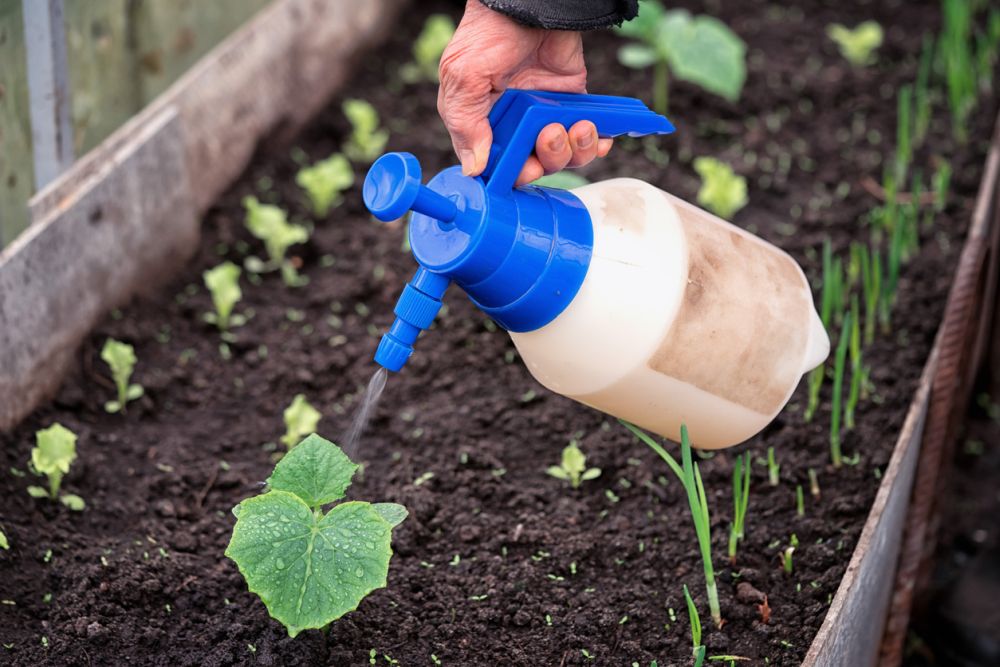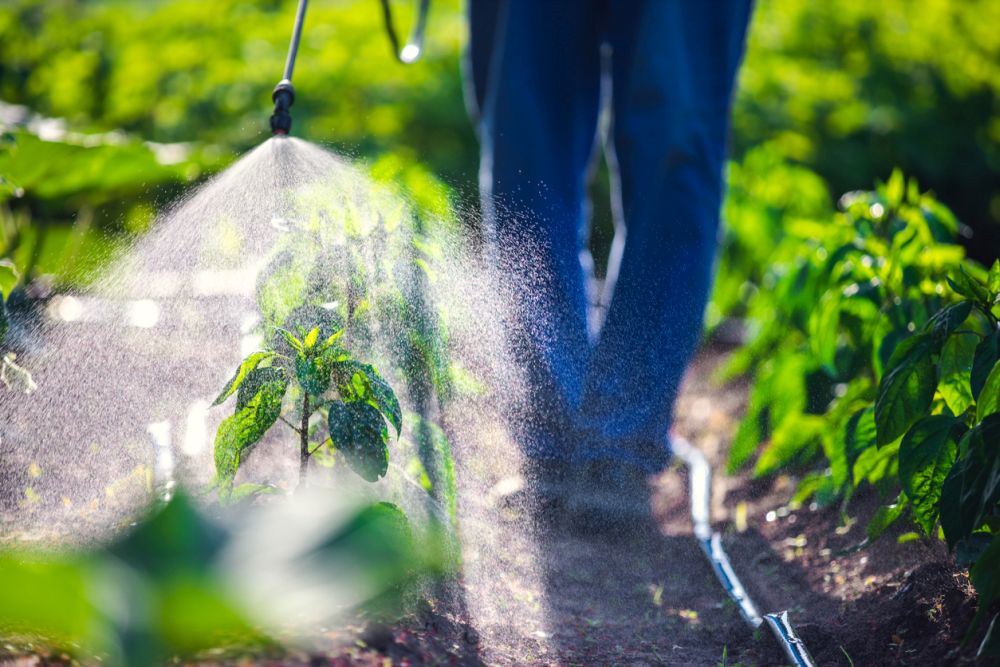Calcium Nitrate Fertilizer – Why And When To Use It In Your Garden
Fertilizers to plants are like food for people. Just as we can’t go through our day without having at least 3 meals and a couple of snacks, plants need their nutrients too. Fertilizers give you a healthy plant that fights off disease, produces plenty of fruits, and grows radiant flowers.
But not all fertilizers are created equal. Some are well-balanced fertilizers with equal amounts of the basic nutrients, nitrogen, potassium, and phosphorus, while others are more tailored for different soils and specific plants. So what makes calcium nitrate fertilizer stand out? Which plants need it the most? And when is it necessary to use it in your garden? Read on to find answers to all these questions.
Calcium Nitrate Fertilizer Facts
General-purpose fertilizers often focus on nitrogen in addition to potassium to offer the plant a quick dose of nutrients to improve its growth, flowering, and disease-fighting capabilities. However, not all plants need all three components together. In fact, it’s usually the nitrogen that is absorbed by the roots, while the potassium element is only for specific cases as when the plant is infected with a disease.
That’s where calcium nitrate as fertilizer comes in. As an inorganic component, it is water-soluble, making it easy for the plant to absorb it and gain benefits in a short time. Compared to slow-release fertilizers, calcium nitrate is fast-acting, and the benefits appear in better blooms and more fruit production within a short period of time.
It has the appearance of salt and is used to make many general-purpose fertilizers. You can use it with flowering plants, vegetables, perennials, annuals, hedge shrubs, herbaceous plants, and even trees both indoors and outdoors.
More often than not, it is the basic ingredient of liquid fertilizers. If you look at the label of the can of liquid fertilizer you get at the store, you’ll find calcium nitrate listed there. That’s because it’s the only way plants can get calcium in a soluble form. You can also use it as a spray that the leaves of the plant can absorb.
Uses of Calcium Nitrate Fertilizer
To say that calcium nitrate fertilizers are crucial for the survival of many plants in your garden is no hyperbole. It contains two of the most needed ingredients that the growth and success of the plants depend on. These are nitrogen and calcium.
Nitrogen is by far the one nutrient that most plants, regardless of species or habitat, rely on to grow leaves, branches, flowers, and fruits. Without it, the plant will not develop well, and if it flowers at all, the flowers will be sickly and lack the vivid colors and deep aroma of its nitrogen-fed counterparts. Plants use nitrogen to produce amino acids and chlorophyll. Which raises the question, when should you use this valuable nutrient that’s often considered a gardener’s best friend?
Disease Prevention
Plants and diseases go hand in hand. Even the most experienced horticulturalists can’t help it when their tomato patch or rose bed gets infected. And just as it infects flowering plants, the disease also hits fruit trees and renders the crop useless. Your precious apple tree, which is the focal point of your garden, can suffer from the bitter pit, blossom end rot, and cork spot, to name but a few plant ailments.
In most cases, the reason the plants are so vulnerable to disease is that they’re not getting enough nutrients from the soil. When the soil is poor in nitrogen and calcium, the plants become more susceptible to infections and diseases. So rather than treat the disease, why not prevent it well in advance?
Use calcium nitrate fertilizers to help the plant fight off disease and prevent it before it appears on the flowers and fruits. If you see the above symptoms, use a foliar spray on the infected areas since it is absorbed quicker by the leaves than liquid fertilizers.
Nitrogen-Deficient Plants
By far, nitrogen is the main nutrient that does all the heavy lifting of producing strong roots, lush leaves, and healthy flowers. In short, a plant wouldn’t survive for long without having enough nitrogen in the soil. As with all other nutrients, nitrogen is not a renewable ingredient in the soil, and you need to replenish it in poor soil, especially if you keep planting in the same patch over and over.
Since it’s such an important factor in every plant’s life cycle, it’s easy to tell when your plants have a nitrogen deficiency or not. Some of the symptoms include:
- Slow growth compared to other plants of the same species in nitrogen-rich soil.
- Pale leaves due to lack of amino acids and chlorophyll, which gives the leaves their lush green color.
- Few or no new offshoots coming off the plant. The offshoots will be slow to develop and might not grow at all.
- The foliage will be less rich and lack the usual bushy and healthy leaves you see in other plants.
- The root system is often less robust and doesn’t establish in the soil.
While you can use ammonium nitrates to help with nitrogen deficiency, they can do more harm than good. Some plants may not absorb the nitrogen part efficiently due to interference from ammonium. So use calcium nitrate to help the plant get the nitrogen it needs since the calcium component benefits the plant as well.
Calcium-Deficient Plants
As every gardener knows, the quality of the soil varies wildly from one garden to the next and even within the same garden. Some areas will have poor soil that lacks the basic components that plants need to survive and thrive. When the soil is lacking in calcium, your plants will suffer both in the fruit production and their overall health.
Even if you start with rich soil, over the years, the calcium reserves will deplete, leading to calcium deficiency in plants. Apple trees, for example, tend to produce sickly apples in what is normally known as cork spot apples. Such plants would benefit from a generous dose of calcium nitrate fertilizers.
In most cases, you won’t be able to tell if the plant is calcium deficient or not. It might look to be normal until it’s time to flower or produce fruits. So it’s better to test your soil before you plant your seeds. If you find that the contents of calcium are low, then use either liquid fertilizers or foliar sprays to remedy that deficiency. The calcium nitrate sprays are a quick way to help plants absorb calcium and regain their health.
Advantages and Disadvantages of Calcium Nitrate Fertilizer
Unlike other fertilizers and plant nutrients, calcium nitrate is not an all-purpose fertilizer. It is produced commercially by mixing a source of calcium like limestone with nitric acid. Ammonium is usually added for its neutralizing effect. As such, this nutrient has its pros and cons.
The advantages of calcium nitrate fertilizer can be summed up in the following:
- Rich in nitrogen.
- Offers the plant its needs for calcium.
- The only water-soluble source of calcium for plants.
- Comes in many forms as a liquid fertilizer or foliar spray.
- Helps the plants fend off disease.
- Doesn’t cost much.
As for the disadvantages of calcium nitrate fertilizer, they are a few.
- It’s not organic.
- More suited for indoor plants.
- Doesn’t work that well with outdoor plants.
How to Use Calcium Nitrate Fertilizer
How and when to use calcium nitrate fertilizers depend on the reason you’re using them. In the case of a diseased plant, you can mix four tablespoons of the fertilizer in a gallon of water then apply it to the plant. As a plant nutrient or to prevent disease, use only one tablespoon of the salt in a gallon of water.
In addition to the different causes, you also have many options when it comes to applying calcium nitrate fertilizers to a healthy plant as opposed to an infected one. For a fruit that’s showing the symptoms of a calcium-deficiency disease, you should use a foliar spray. It ensures that calcium gets to the infected areas much quicker and helps the plant heal. Spray the fertilizer generously all over the plant’s leaves and fruit twice a week until you see the symptoms disappearing.
As a top dressing fertilizer, use the calcium nitrate fertilizer in its salt form without dissolving it in water. Mix it well with the soil without letting it get in contact with the roots of the stem of the plant. You can also apply it as a side fertilizer. Instead of mixing it with the topsoil, just spread it in lines or as a circle around the plant’s base.


Really interested for my green house